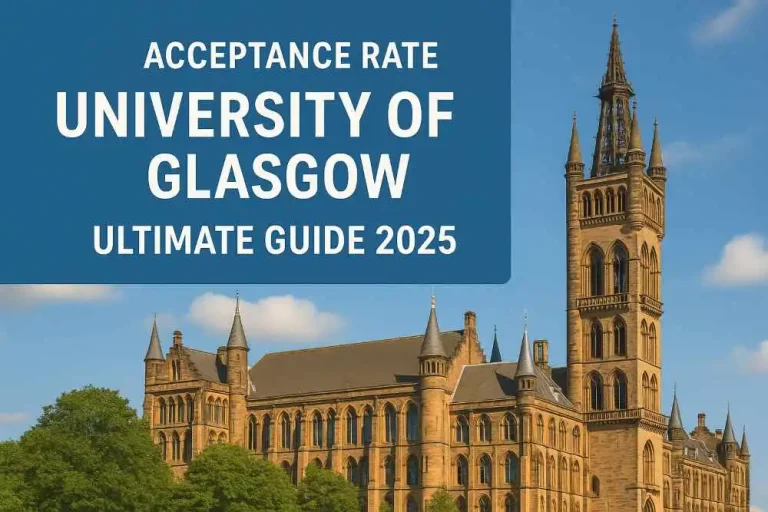Starting university is an exciting journey, and many students dream of studying at the University of Bristol. Let’s explore everything you need to know about getting accepted into this wonderful institution, including its acceptance rate and what makes it special.
Understanding the Acceptance Rate
At the University of Bristol, the acceptance rate is currently around 68%. To make this easier to understand, imagine you and your friends are at a big party with 100 people, and everyone wants to go to Bristol. In this group, about 68 people would receive happy news that they’ve been accepted. While this might sound like it’s easy to get in, don’t be fooled – you still need to work hard and show your best self to be one of those accepted students.
Why Bristol is So Popular
Bristol isn’t just another university – it’s a place where history meets the present in the most amazing ways. When you walk through the city, you’ll see beautiful old buildings right next to modern coffee shops and stores. The city is famous for its incredible street art (did you know the famous artist Banksy started here?), and there’s always something fun happening around every corner.
What makes Bristol really special is how it brings together the best of everything. The university is known worldwide for being one of the top places to study. And here’s something cool – in Bristol, about one out of every five people you meet is a student! This means you’ll always find friends who understand what it’s like to be studying at university.
How Bristol Chooses Students
The university doesn’t just pick students randomly from those who apply. Think of it like putting together a big puzzle – every piece needs to fit just right. When looking at applications, Bristol cares about more than just your grades. They want to know who you are as a person and why you’re excited about learning.
Your grades are important because they show you can handle difficult schoolwork. But Bristol also really cares about your Personal Statement – this is where you get to tell your story and explain why you’re passionate about your chosen subject. Some courses at Bristol are more popular than others, which means they might be harder to get into.
Making Your Application Stand Out
To have the best chance of getting accepted, there are several things you can focus on. First, work hard in your current studies and aim for the best grades you can get. Remember, while the acceptance rate is 68%, having better grades can only help your chances.
Your Personal Statement is your chance to shine bright. Think about what makes you different from other students. Maybe you love doing science experiments at home, or perhaps you write stories in your free time. Bristol wants to know about these things! They’re looking for students who do more than just study – they want people who are curious about the world and ready to try new things.
After You Get Accepted
Getting accepted to Bristol is just the beginning of your adventure. Once you receive your offer, you’ll need to make sure you meet any conditions they’ve set, like getting certain grades in your final exams. You’ll also start thinking about where you’ll live – there are lots of great places to stay in Bristol, but it’s good to start looking early.
Many students find it helpful to connect with their future classmates before starting university. You can join social media groups for Bristol Students and start making friends before you even arrive. This can make your first days at university much less scary and more exciting.
Looking Beyond the Numbers
While knowing the acceptance rate is helpful, remember that every student at Bristol has their own unique story. Some are amazing at math, others are brilliant writers, and many have interesting hobbies or talents. The university welcomes students from all over the world, creating a diverse and exciting place to learn.
Your Next Steps
Getting into the University of Bristol might seem like a big challenge, but it’s definitely possible if you put in the effort. Think of the acceptance rate as a target to aim for rather than something to worry about. With a dedication to your studies, a Personal Statement that shows your true personality, and real enthusiasm for what you want to study, you could soon be walking through Bristol’s historic gates as a new student.
Remember that every current Bristol student once sat where you are now, wondering if they would get in. They worked hard, believed in themselves, and made it happen. The beautiful city of Bristol, with its friendly people, exciting culture, and excellent university, could be waiting to become your new home. Why not take that first step and give it your best try?
FAQs
-
What is the current acceptance rate of University of Bristol?
The university of Bristol acceptance rate is around 68%, reflecting a moderately competitive admissions process.
-
Is the acceptance rate of University of Bristol the same for all programs?
No, competitive programs like Medicine or Law have lower acceptance rates compared to arts or social sciences.
-
How does the acceptance rate of University of Bristol compare for international students?
The acceptance rate for international students is similar to the overall rate but varies by course and demand.
-
What factors influence the acceptance rate of University of Bristol?
Factors include the number of applications, course demand, and academic requirements for each program.
-
Has the acceptance rate of University of Bristol changed in recent years?
While the overall acceptance rate remains steady, certain courses have seen increased competition due to higher application volumes.
-
Which programs have the highest acceptance rates at the University of Bristol?
Programs in less competitive fields, such as humanities, generally have higher acceptance rates.
-
What academic qualifications are required to meet the acceptance rate of University of Bristol?
Strong A-levels, IB scores, or equivalent qualifications are necessary, depending on the program.
-
What is the postgraduate acceptance rate of University of Bristol?
The postgraduate acceptance rate varies by course but is typically between 40-60%, depending on demand.
-
How does the acceptance rate of University of Bristol compare to other UK universities?
Bristol has a higher acceptance rate compared to institutions like Oxford or Cambridge, making it accessible yet competitive.
-
What can students do to improve their chances given the acceptance rate of University of Bristol?
Focus on academic excellence, craft a strong personal statement, and prepare thoroughly for any required interviews or tests.







